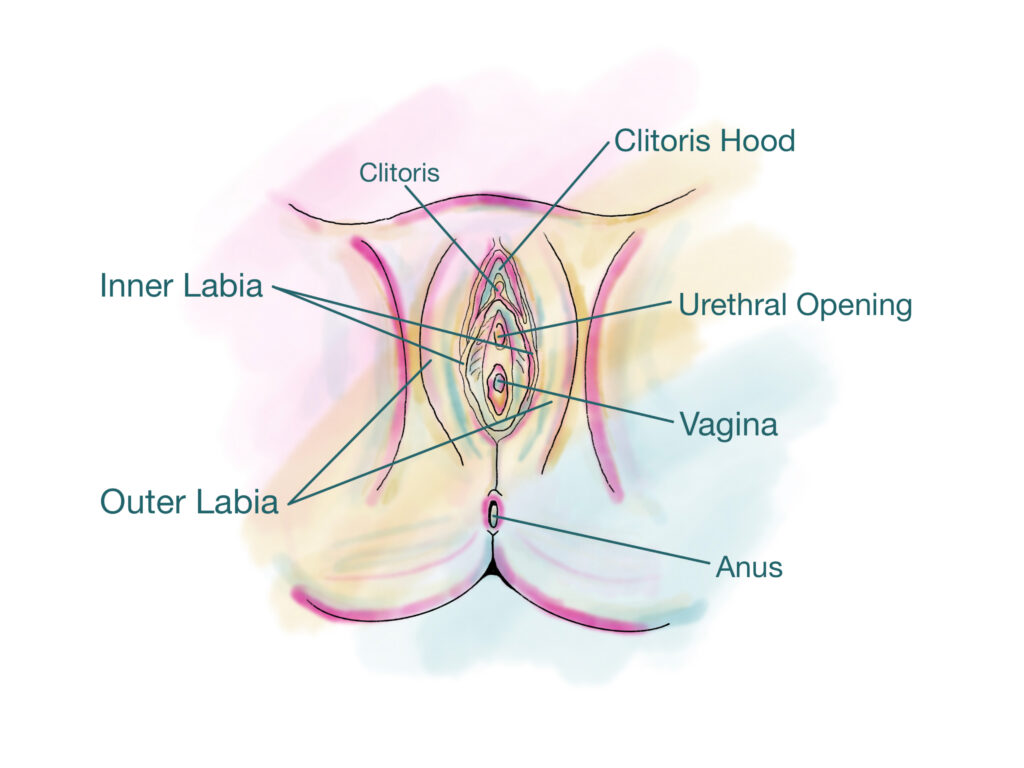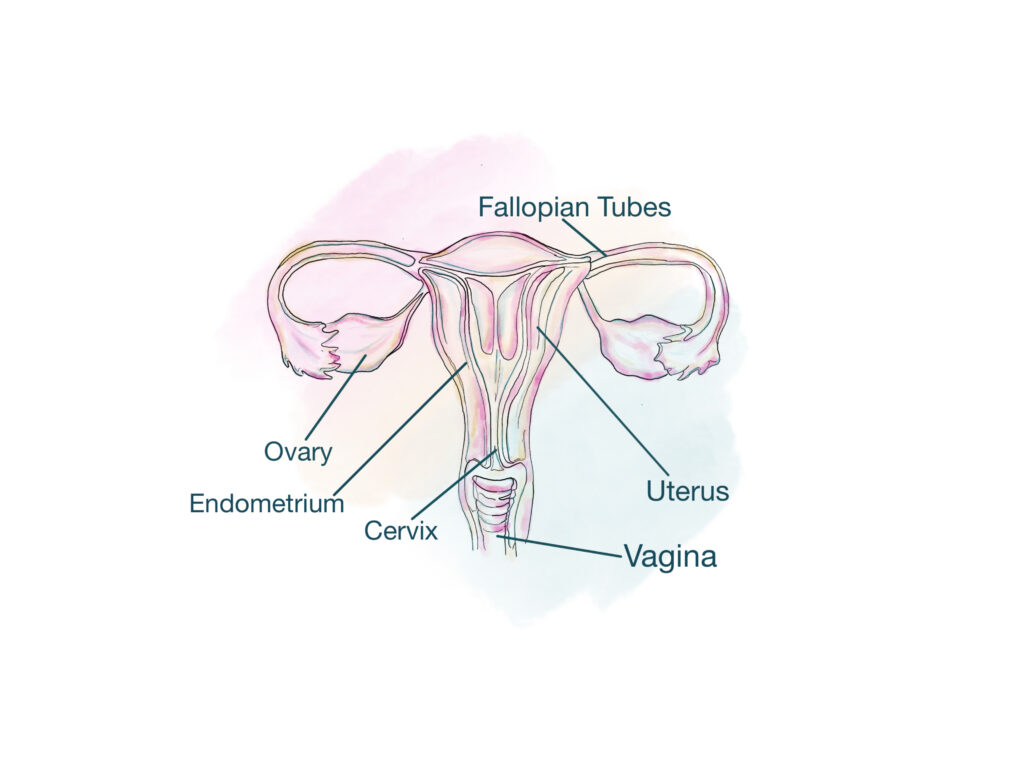Category > Relationship with yourself, Sex, Women's Body
The Vulva and the Vagina
The vulva is the name for the external parts of the female genitals and often mistakenly called the vagina. The vulva and labia form the entrance of the vagina, and the vagina is the internal, or inside part of the female genitals.
The vulva is made up of:
The mons pubis, the pad of tissue that is usually covered with pubic hair. It functions as a cushioning during sexual intercourse and also contains sebaceous glands that secrete pheromones (chemical substance) for sexual attraction.
The Labia majora are the outer lips which are covered with pubic hair and are there to enclose and protect the other external genital organs.
Labia minora are the inner lips (inside the Labia Majora). They begin at the clitoris and end under the opening of the vagina. The skin is hairless and can be short, long, wrinkled, or smooth. Often one lip is longer than the other. Its role is to protect the vaginal and urethral openings from irritation, dryness, and infection.
The clitoris is under the point where the inner labia meet and has more of a sensual role than a functional one.
The hymen is a thin membrane of tissue that covers the vaginal opening, although it is not known to have a specific function it’s thought that it keeps germs and dirt out. During puberty estrogen is made by the ovaries and causes the hymen to change shape and stretch becoming susceptible to tearing (sometimes this can cause a slight pain, but sometimes not). The hymen then becomes a half moon shape allowing the menstrual blood to leave the body during menstruation.
The urethra is a tube that is connected to the bladder and where urine leaves the body and is separate to the opening of the vagina.
The vestibule holds the opening (entrance) for the vagina and urethra.
Urinary opening sits just in front of the vaginal opening and is where urine leaves the body.
The vaginal opening is below the urinary opening and where menstrual blood leaves the body, where sexual penetration is, and babies are born. The vagina is stretchy and expands when the person is turned on.
The perineum is the area of skin between the vagina and the anus.

The vagina is a woman’s most sacred space and the opening to her centre of sacredness, which is the cervix.
The cervix is a cylinder-shaped neck of tissue that connects the vagina and uterus. Located at the lowermost portion of the uterus, the cervix is composed primarily of fibromuscular tissue.
The cervix produces cervical mucus that changes in consistency during the menstrual cycle to prevent or to aid pregnancy. Just before ovulation cervical fluids increase and become like raw egg whites in consistency which nourishes the sperm cells and enhances their ability to move through the cervical canal. After ovulation the mucus becomes thicker and makes it more difficult for sperm to enter.

During menstruation, the cervix opens a small amount to permit passage of menstrual flow. During vaginal childbirth, the cervix dilates widely to allow the baby to pass through.
During heterosexual intercourse (vaginal penetration) the vagina receives the penis. It’s an important moment when having sex as it is the woman who guides the male partner when to insert the penis. However, it is often experienced the other way around that the man is the one who decides and kind of intrudes the vagina. This leads to many women having pain when the penis enters, as the vagina may not be ‘ready’ or she is not given her leading role we could say and hence is not inviting the penis in, but instead entered.
On a physical level the vagina needs to be warm, swollen and well lubricated to be considered ready to being entered. All the tissue is soft and spongy, and the penis can glide in. If there is no change with the vagina (it’s not ready) then it can cause friction and the muscles may contract which can cause pain.
The vagina tells us if she is ready or not so it’s wise to listen to her and not override the communication just to do it or to please the desire for intercourse of your partner.
Many young women experience pain during intercourse (read also our article on painful sex) which is NOT normal. You should never under any circumstances experience vaginal pain during intercourse.
Did you know …..
The clitoris has 8,000 nerve endings! 4,000 more than the tip of a penis
Your vagina cleans itself! The vagina produces fluids needed that cleanse and the vaginal area.
Just like snowflakes no two vulvas are the same. The labia majora and labia minora look different in colour, shape and size.
Other than the intestines, vaginas contain more bacteria (good bacteria) than anywhere else in the body which help balance the pH levels. When these levels are thrown off it can cause itching, unusual discharge, burning and unpleasant odour.
Your vagina grows when aroused. The vagina can double in size when aroused where the upper part of it elongates and pushes the cervix and uterus slightly deeper into the body to make room for penetration.
The vagina naturally lubricates to make penetrative sex more enjoyable and comfortable.



